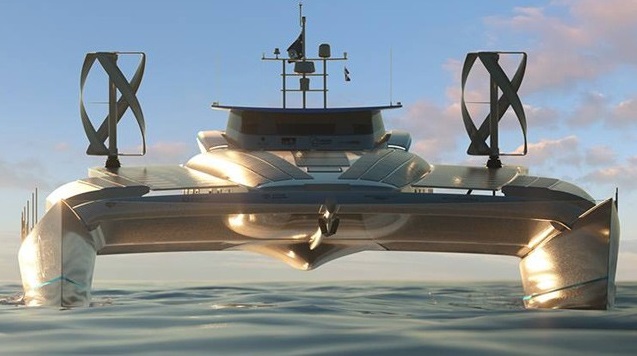Hydrogen-Producing Boat Readies for World Trip
In 2017, a high-tech ocean vessel powered by sun, wind and sea will start a six year voyage around the world, visiting 50 countries. The voyage is designed to showcase the efficiency and performance of the entire hydrogen chain in hostile environments, such as at sea.
Energy Observer will promote renewable energies and raise awareness of energy transition challenges. It will make 101 stops between 2017 and 2022 in the world's maritime capitals, historic ports, nature reserves and at major international events.
The boat has the backing of the United Nations Educational, Scientific and Cultural Organisation (UNESCO). UNESCO representatives are involved in the development and implementation of the mission, and the vessel is expected to make a symbolic stop on the Hudson at the foot of the United Nations Headquarters.
The boat combines various sources of renewable energies to produce its own hydrogen from sea water and store it on board. This energy architecture aims to enable navigation that is 100 percent energy autonomous, without emitting any greenhouse gases or fine particles.
Combining energies is the project’s innovative strength. It employs three different types of photovoltaic panels covering a surface of 130 square metres, two vertical axis wind turbines, one traction kite and two reversible electric motors for hydrogenation.
This equipment allows the vessel to produce and store hydrogen on board, a world first.
The voyage will be led by Victorien Erussard, offshore runner and merchant navy officer, and Jérôme Delafosse, explorer and documentary filmmaker.
The vessel was built in Canada in 1983 by the sailor Mike Birch and under the supervision of naval architect Nigel Irens. Once named Formule TAG, standing for “Technique d’avant garde” (avant-garde technique), it was the first sailing boat to break the symbolic 500 miles limit in 24 hours in 1984. It won the Monaco-New York race in 1985, the Jules Vernes Trophy in 1994, and still holds the South Atlantic crossing’s record.
Originally 24 metres (78 feet) long, it has been extended four times and now measures 30 metres (98 feet) in length and 12 metres (39 feet) in width.

that matters most
Get the latest maritime news delivered to your inbox daily.
Energy Observer will leave its home port of Saint-Malo, France, in spring before departing from Paris shortly after for the global voyage.

